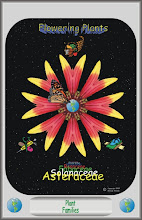


Foraging Digger Wasp (Sphecidae), Cerceris Sp. Photo by Christopher Zabawa


Canada Goldenrod (Solidago canadensis L.)
Found across the United States, and Canada, except Southeastern U.S. states, the native Canada Goldenrod (Solidago Canadensis L.) or Common Goldenrod, a member of the Aster (Asteraceae) family considered weedy or invasive, blooms from mid-summer through fall.
Canada Goldenrod, found near wood margins or open areas grow in moist, sandy or heavy clay soils.
The numerous 1/8 inch long flowers occur in dense flat topped clusters along branching stems that tend to droop, due to the weight of the flowers.
Plants growing from two feet to around four or five feet tall have un-stalked, sparsely toothed leaves to 3 ¼ inches long and 1/2 inch wide. The narrow, lance shaped leaves are found alternately along the hairy stem.
The Canada Goldenrod, as well as other species of Goldenrods, is an important source of food for foraging insect species such as the Digger Wasps (Sphecidae), Cerceris Sp. pictured above.
Around 125 species of goldenrods occur in the United States making identification sometimes difficult.
The genus, Goldenrods (Soldiago) is not responsible for widespread allergic symptoms (hay fever). The pollen of Goldenrods is heavy and does not blow far from the plant. Ragweed (Ambrosia artemisiifolia) and other grass and weed pollen is generally responsible for the miserable allergic symptoms which occur in some individuals in late summer and fall.
Edible: The cooked young leaves and stems with flowers are edible and a tea brewed from the leaves and flowers.
The Canada Goldenrod (Solidago canadensis L) is an important medicinal plant. All parts of the plant including flowers, leaves, stems, roots, and seeds have various medicinal properties.
Flowers: The flowers chewed, is used as treatment of sore throats and other cold symptoms. A tea made from the flowers is used in the treatment of diarrhea, body aches, fevers and snakebites.
Roots: Treatment of burns
Seeds: Used in treatment of kidney and bladder disorders, muscle or joint stiffness, and arthritis.
Other herbal uses include treatment of wounds (antiseptic and bleeding), urinary infections; chronic mucus discharge from nose and throat (common cold), various skin ailments, flu, whooping cough, bladder and kidney disorders, and gastroenteritis (stomach and intestinal inflammation). Used as a treatment for thrush, a fungal disease of the mouth characterized by white patches
It is not recommended that these plants be used as medicine or food since they may have bad side effects. Similar species, misidentified, may cause illness or death.
Photo taken near my pond, rural east Norman, Oklahoma September 2009







No comments:
Post a Comment